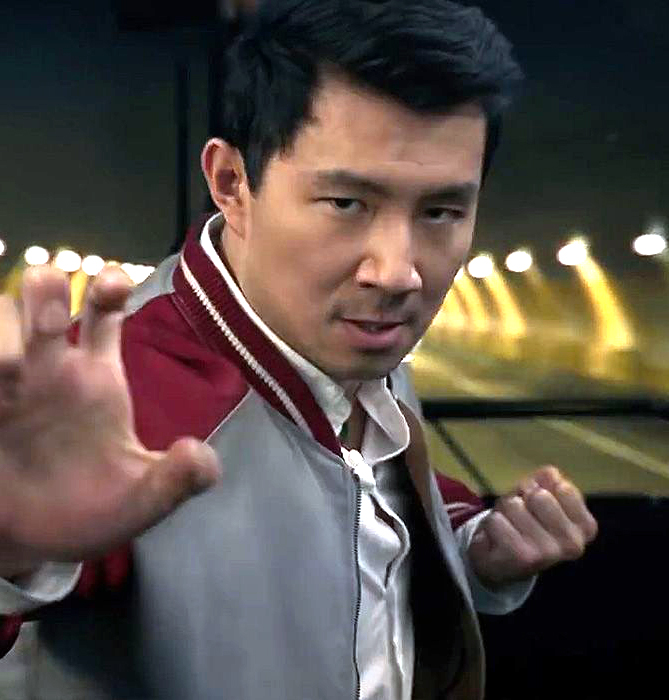Candyman is a sweet new treat for horror fans – film review
By Tribute on August 27, 2021 | 4 Comments
In this “spiritual sequel” to the original 1992 horror film Candyman, the 2021 version of the film follows Anthony McCoy (Yahya Abdul-Mateen II), a prestigious artist struggling to move forward in his career when he turns to the local Chicago ghettos to find inspiration. There he becomes fascinated with the story of Candyman and uses it as his muse for his new project. However, as he does so, Anthony unwittingly sets events into motion that finds Candyman summoned by multiple girls, all of whom wind up dead. With these deaths related to Candyman, Anthony sets out to track him down and in doing so becomes concerningly obsessed.
When it was announced that Jordan Peele would be involved in a Candyman reboot/sequel, the project instantly became one of the most hotly anticipated horror offerings in recent memory. While Peele himself would not be directing this film, his involvement as a writer and producer still elicited some major excitement thanks to the critical and financial success of his first two directed works: Get Out and Us. Additionally, the themes of the original film felt like a perfect match for his talents, as well as extremely relevant to his body of work, which only left the question of what to expect from director Nia DaCosta.
After making a similarly strong debut with her own feature, Little Woods, DaCosta is quickly proving she is a force to be reckoned with, with her work on this 2021 version of Candyman. From her shot composition, use of lighting, and staging for the film’s various set pieces, DaCosta’s ability to emphasize the atmosphere of each scene is captivating. What’s particularly impressive about her direction is how she chooses not to dwell on or glorify the violence, an expectation that most audiences will have.
Instead, the focus is entirely on its story and characters, enriching the material it’s been founded upon, letting it grow into something greater. DaCosta takes a less-is-more approach and lets the imaginations of the audience run wild at the horrors that are unfolding, instead of going for the cheap thrills of extremely violent deaths. That isn’t to say that the film is bloodless, but that the violence is a means to the story and not a crutch for it to rely on.
Those looking for a bloodfest will be disappointed, but that expectation would have reduced the film to being something akin to a generic slasher film, with a supernatural entity in the vein of Freddy Krueger and the Nightmare on Elm Street series. DaCosta and Peele aren’t content with such an approach and elevate this film to much higher aspirations — that they frankly achieve. Still, the enriching of the material would be meaningless without a cast to bring it to life and the one assembled by the filmmakers is fantastic.
Yahya Abdul-Mateen II leads this film with aplomb as a rising, but struggling artist. He emits a glowing confidence and self-assurance that is slowly being eaten away by his obsession and the pain he has unleashed. The rest of the cast is rounded out by solid performances all around, but the one standout has to be Colman Domingo. Long a talented character actor whom you’d be able to recognize from several films, Domingo stands out in the handful of scenes he’s given, easily stealing the show from leading man Abdul-Mateen. There’s a conviction and pain in his delivery that will captivate audiences. Through his performance there’s also a tragedy at all the factors that have contributed to his warped view of the world that is very much rooted in social commentary, which we’ve come to expect from Peele’s writing.
The film is punctuated by its final scene, which delivers the exclamation mark on its themes and ideas in an incredibly powerful sequence. Everything the film is about builds up to this crescendo of a finale that ends the film on both a high and tragic note. However, if there is one major criticism for the film, it is in its uneven focus on its characters, given the perspective shift towards the latter half of the movie. The change in perspective can feel a bit jarring as one character winds up feeling forgotten, but it is done in the service of the film’s higher aims.
Peele is once again looking to break new ground in the horror genre using Black experiences as his foundation, and in Nia DaCosta he found a great complementary director to bring that shared vision to life. This film will suprise many — not for its twists, but in its unrelenting aim of taking to task the generational trauma that perpetuates a cyclical and unending violence.
Candyman delivers a truly sweet new treat for horror fans that will hook you in and tear any of your expectations to shreds as you chant his name wanting more. ~Paolo Maquiraya
Comments & Discussion
Similar Articles
Shang-Chi wins fourth consecutive weekend at box office
September 26, 2021 | Leave a Comment
Shang-Chi and the Legend of the Ten Rings topped the box office again this weekend, becoming the highest-grossing film domestically since the pandemic began.
Shang-Chi fends off competition to stay number one
September 19, 2021 | Leave a Comment
Facing new competition, Shang-Chi and the Legend of the Ten Rings was triumphant as it continues a steady climb to become the highest grossing film of 2021.
What to watch at home this week September 13 to 19
September 14, 2021 | Leave a Comment
Check out this week’s new releases on Netflix, Disney+, Amazon Prime Video, BritBox and other streaming channels, as well what’s available on DVD/Blu-ray.



“…THEMES of the original film” ??? A film has one theme. Having multiple themes is the same as having no theme at all. Please get a clue.
I studied screenwriting and you can definitely have more than one theme. They’re usually connected somehow, but there’s no rule about that.
There is definitely a rule. There should be one theme and it should be expressed in every scene and inform every character. Having multiple themes results in an unfocused mess. I hope you didn’t pay too much for your studies.
A simple google search will enlighten you Chris. Let me quote from several sources:
“Can there be multiple themes in a story? Easily. Yes. In fact most stories have multiple themes. It is what gives them depth and makes them interesting. If a story really has only one theme, it tends to not be much of a story at all.”
Also have a look at this: https://www.reddit.com/r/Screenwriting/comments/eruogt/can_a_movie_have_two_themes/
And this: “A story will often have more than one theme, especially if it’s a novel as opposed to a short story. Short stories, due to their length, tend to only have one major theme, while a longer novel has time to elaborate on several themes at once. To return to our example, The Great Gatsby has several themes.”
https://getfreewrite.com/blogs/writing-success/theme-of-a-story#:~:text=A%20story%20will%20often%20have,opposed%20to%20a%20short%20story.&text=It's%20fine%20for%20your%20story,of%20giving%20it%20too%20many.
Whether it’s a movie, or a novel, you can have more than one theme. And you should, if you’re a good writer.
Before you shoot your mouth off, you might want to educate yourself. You are obviously not a writer. Or if you are, you’re not a good one. But being jealous of people who can write won’t get you far.